Excursion to two marteloscopes near Freiburg city
This week’s blog post will take you to two marteloscopes. Do you know what that is? Any guesses? We take a definition from a technical paper published by the EFI (Schuck et at., 2015):
”Marteloscopes are 1-hectare large, rectangular forest sites where all trees are numbered, mapped and recorded. In combination with a software tool, they are used for silvicultural training.”
The MSc European Forestry students Rayhanur Rahman and Lucas Moura de Abreu visited two marteloscopes near Freiburg during the course “Close-to-nature forest management”, offered by the Albert-Ludwigs-Universität Freiburg, one of the universities of the MSc EF consortium and where they are doing their second year of the programme.
Now, we will take you through a visit to these sites. We hope you have a good time and a glimpse of some forest types around Freiburg!
The first marteloscope is located in Mooswald, a public forest that belongs to the city of Freiburg and is located along the west side of the city. It’s a flat area with a shallow water table, at an elevation of around 230 m.a.s.l.
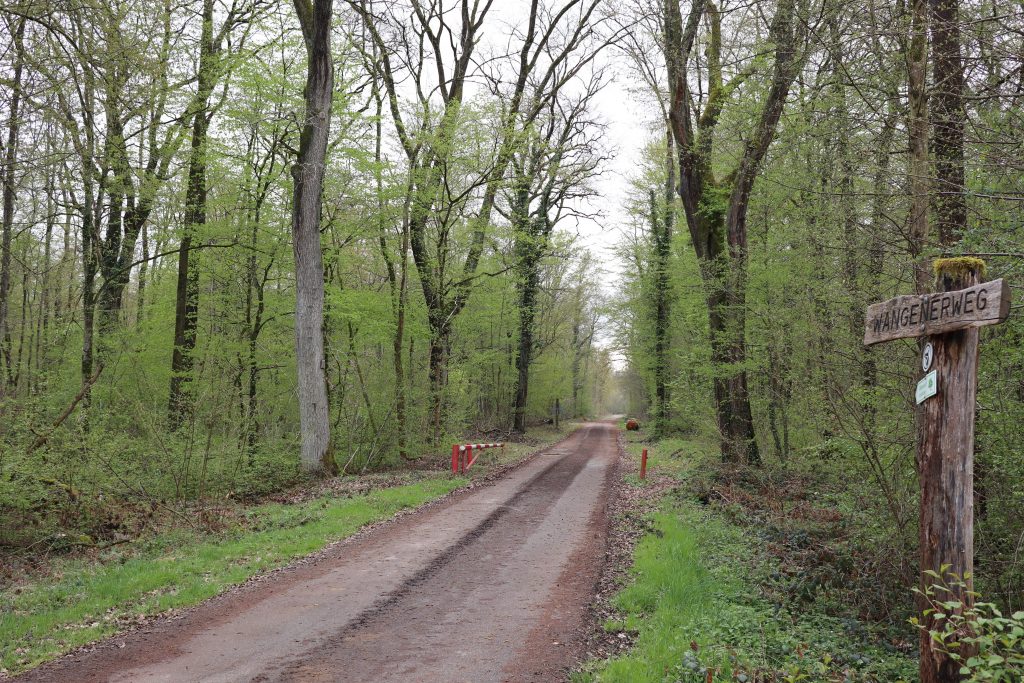
The main species in the marteloscope are the common oak (Quercus robur L.), red oak (Quercus rubra L.), black cherry (Prunus serotina Ehrh.), European or common hornbeam (Carpinus betulus L.) and common or black alder (Alnus glutinosa (L.) Gaertn.). There are also less abundant species like the sycamore maple (Acer pseudoplatanus L.), of which you can see a detail of the leaves on the picture below:
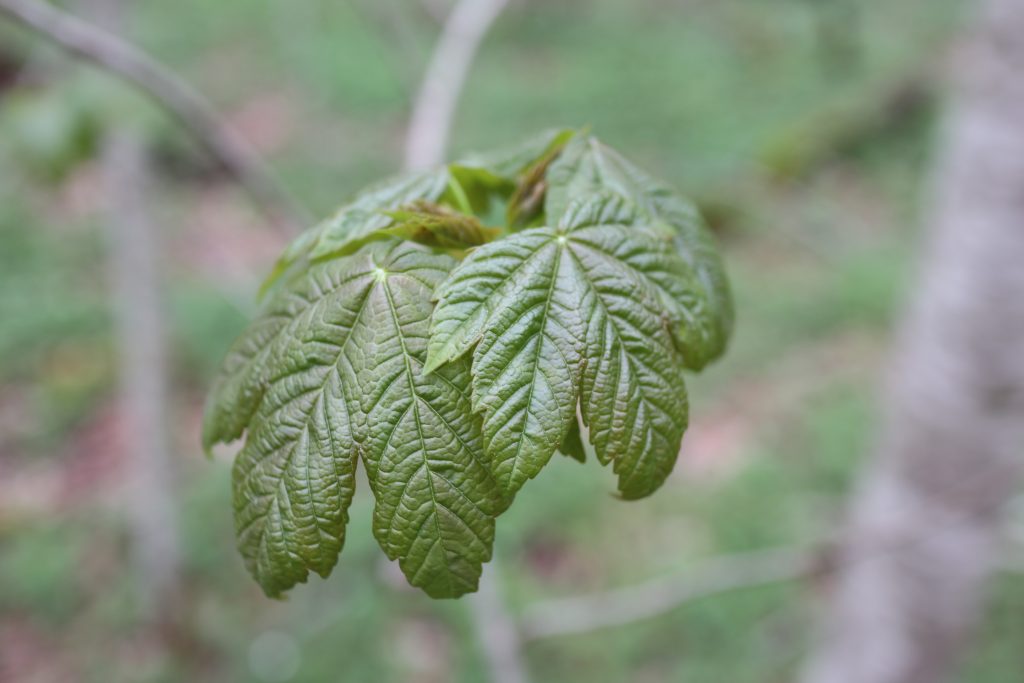
All the trees in the marteloscope above 7 cm dbh are numbered, as you can see below:
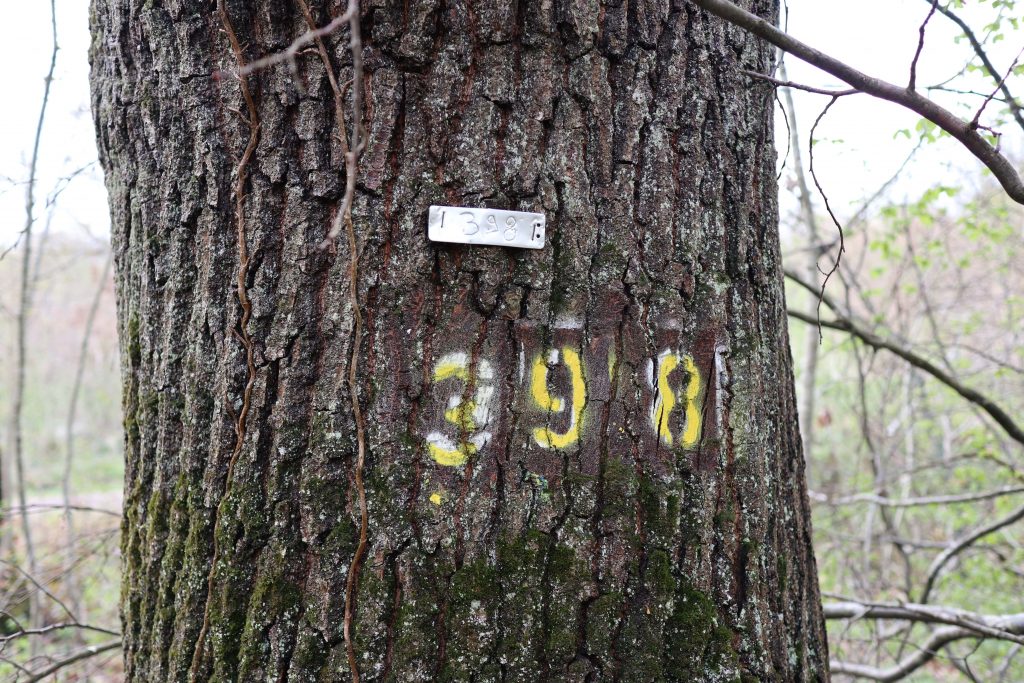
A tablet is the tool used to visualize the trees in the stand. Tree species are symbolized by different colors and dbh by the different circle sizes, as you can see in the picture below. With the map, a pretty good grasp of the spatial horizontal distribution of the trees can be easily obtained. If you select a tree, information is displayed with both its economic value (already accounting for harvesting, i.e., the price for which the forest owner would sell the wood at the road) and its ecological value, which is based on tree microhabitats (more details in the technical paper at the end of the post).
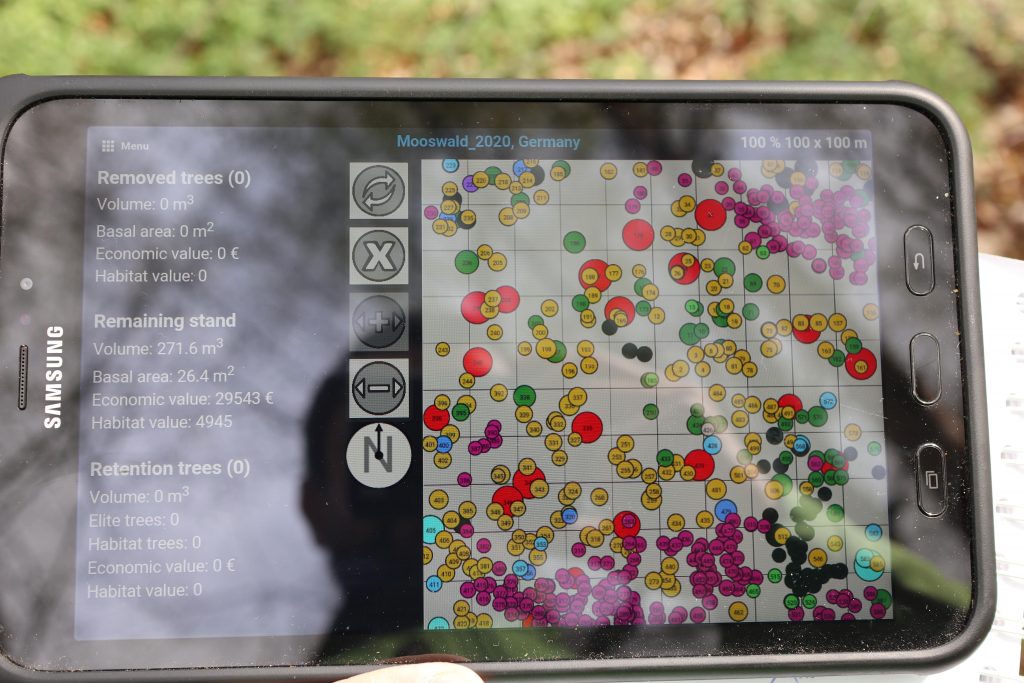
The overstory of this stand is mainly composed of common oak. Some of those trees have a stem with very high quality for veneer production. Others have damages from a wood production perspective (e.g. cavities, bark wounds, broken crown), which from a biodiversity perspective on the other hand create microhabitats and consequently a high habitat value (see pictures below for one example of each). Other trees can present both of those values at a high level – they are then called “conflict” trees and represent a trade-off between wood production and biodiversity goals. The decisions of harvesting or retaining each tree on the stand can be simulated on the tablet. Finally, a report is generated with the outcomes of the different simulated scenarios.
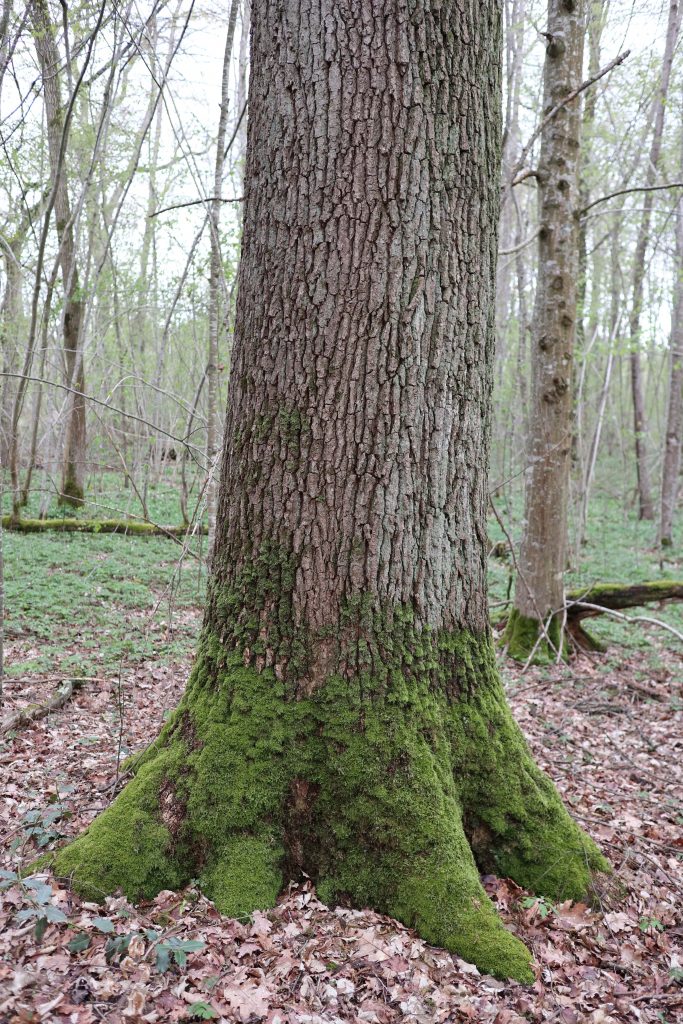
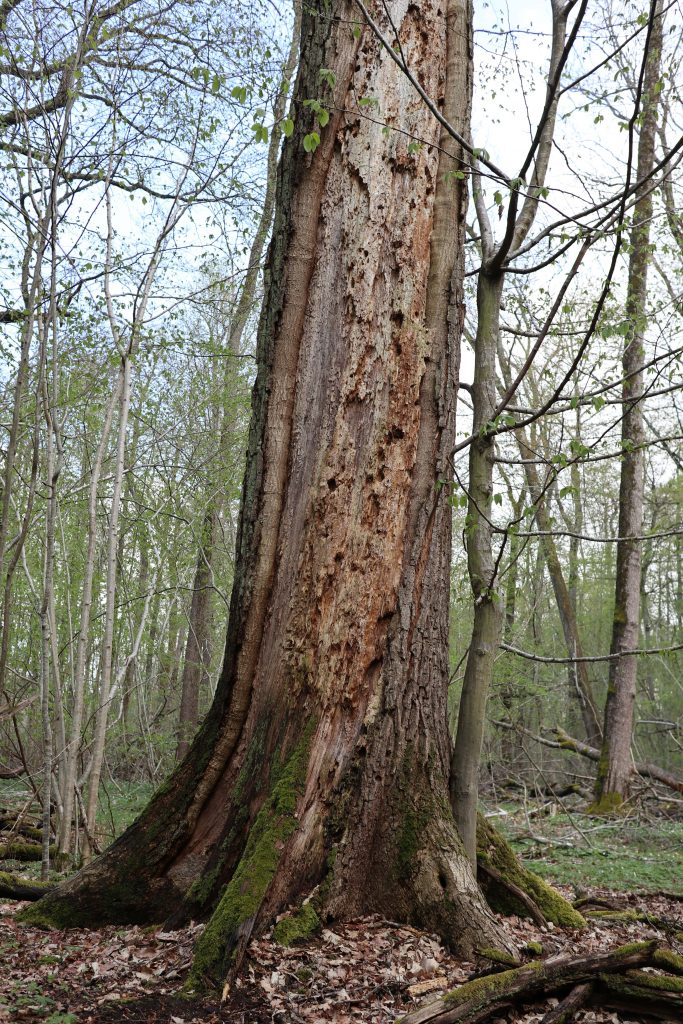
The second site is the Roßkopf marteloscope, located at an altitude of around 420 m.a.s.l. Located on a slope as opposed to the first area, the species composition also differs greatly. Here, the stand is dominated by three species: European beech (Fagus sylvatica L.), silver fir (Abies alba Mill.) and Pseudostuga menziesii (Mirb.) Franco.

The regeneration is dominated by silver fir, as you can see in the picture below:
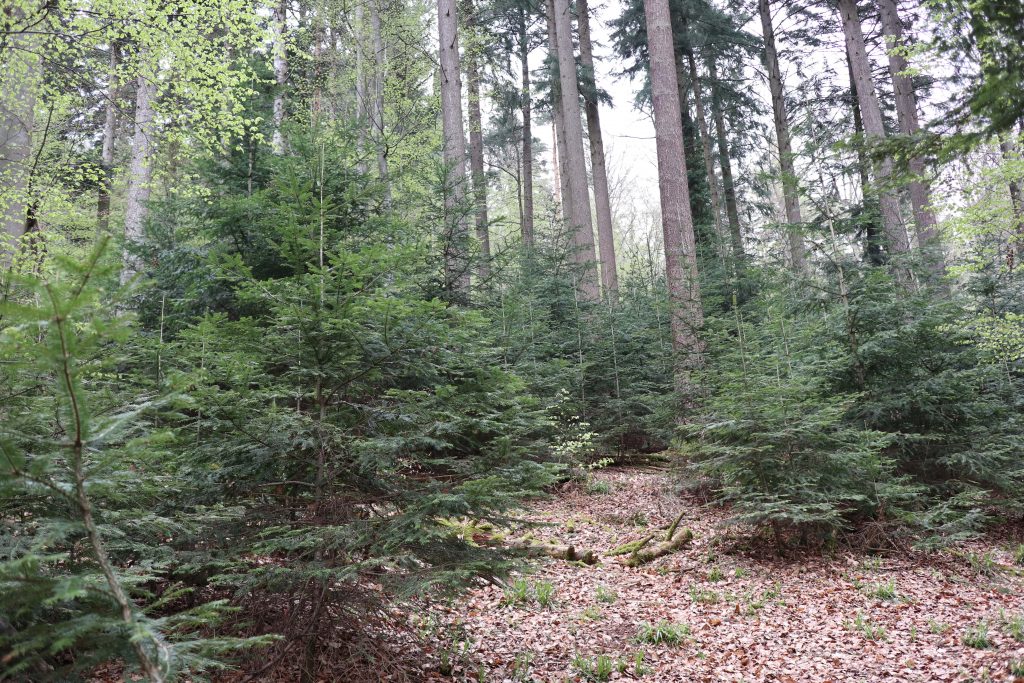
Despite its abundant regeneration, the site is considered not very suitable for silver fir, due to its relatively low elevation (the native range for the species would be above ~600 m.a.s.l.), which suffers very much from drought stress when it achieves older ages and larger diameters. In fact, many individuals fitting that description were found dead in the stand. The species can still be managed at this site, according to Dr. Thomas Asbeck, who supervised the visit, but measures such as using a smaller target diameter for the species (e.g. 45 – 50 cm) need to be adopted.
The species with highest economic value in the stand is Douglas-fir. The trees of this species are pruned in this site, with dbh achieving 105 cm and a tree value of €1,000 or more at the road side (see picture below).
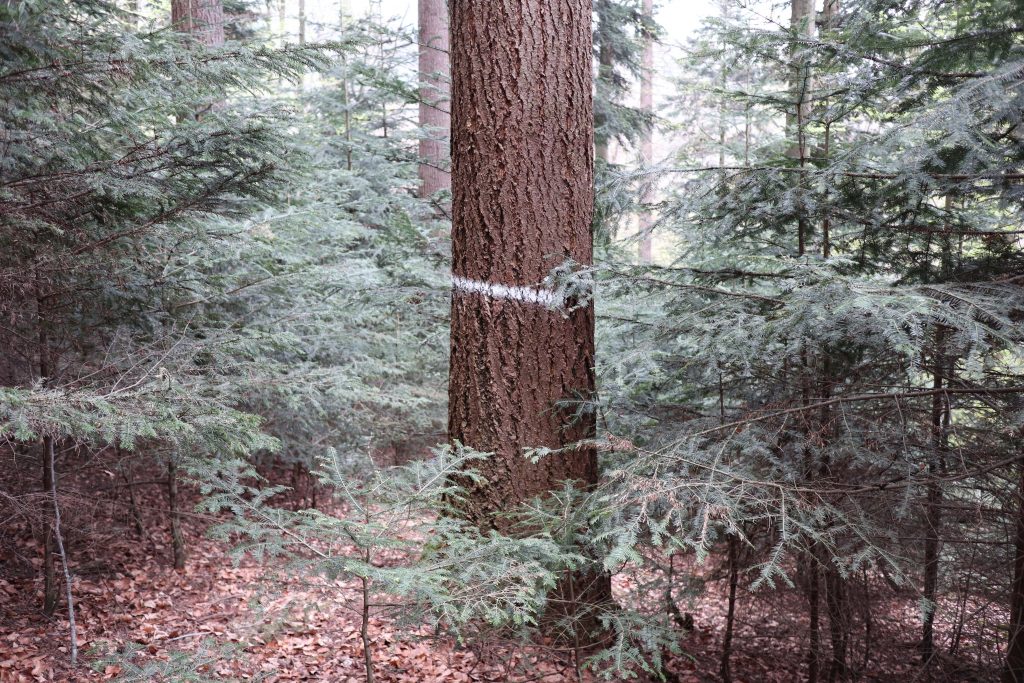
As a conclusion, the MSc EF students found marteloscopes a very useful tool for understanding and visualizing better the effects of silvicultural prescriptions on a stand.
References
Schuck, A., Kraus, D., Krumm, F., Schmitt, H., 2015. Integrate+ Marteloscopes – calibrating silvicultural decision making. Integrate+ Technical Paper No 1. 12 p.
Lucas Moura de Abreu is a forest engineer from Brazil. He’s doing his second year of the MSc EF in the University of Freiburg, Germany. You can reach him at [email protected].